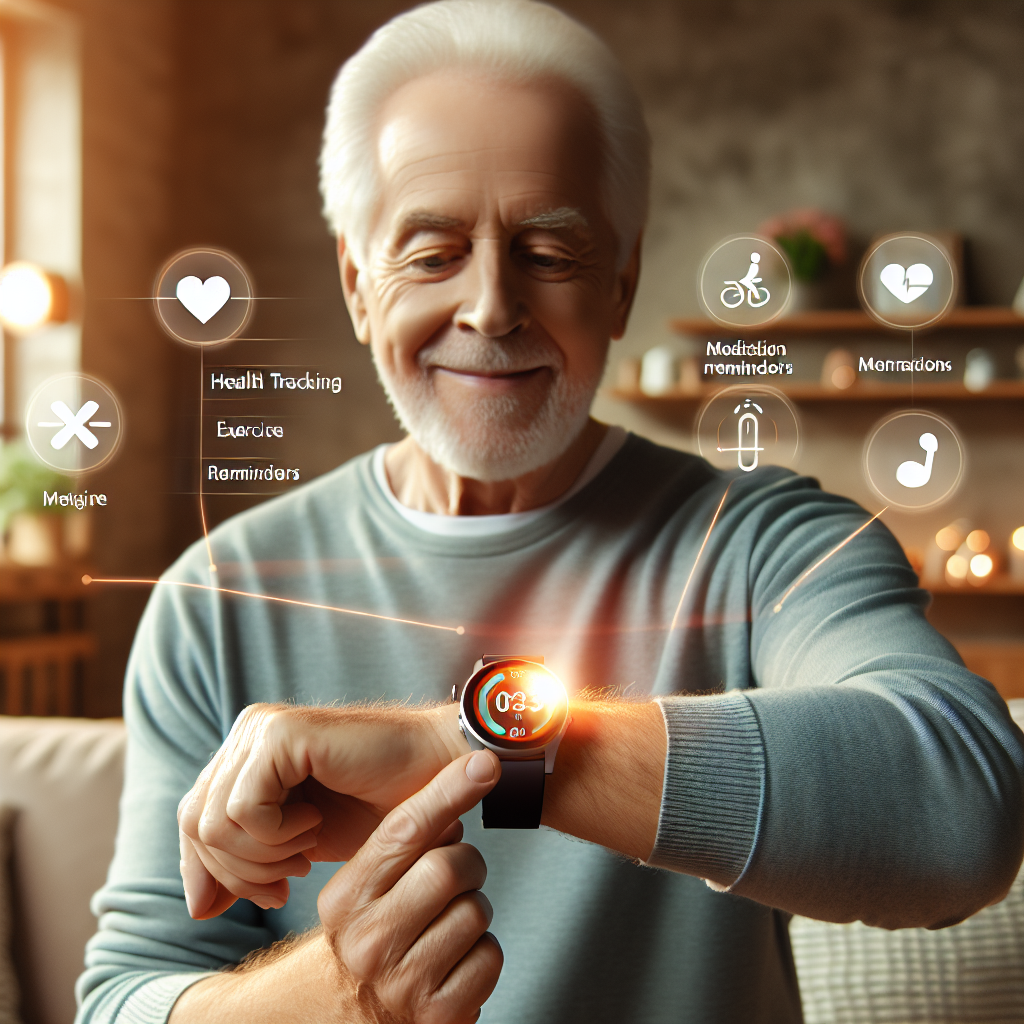How Smart Devices Support Cognitive Health
Ever wondered if your smartphone could be your secret ally against memory loss? Turns out, technology isn’t just for the younger crowd—it’s becoming a powerful tool for keeping our minds sharp as we age. Recent studies show that seniors who regularly engage with digital devices often enjoy better cognitive health and memory skills. Think about it: when you’re checking Facebook to see photos of your grandchildren or using a video call app to chat with old friends, you’re not just staying connected—you’re giving your brain a workout!
The beauty of today’s smart devices is how they support our brain health in ways we might not even notice. Scrolling through news articles, playing word games, or even just texting family members requires attention, decision-making, and memory—all excellent exercises for your brain. For those planning for retirement or already enjoying retirement life, incorporating technology into daily routines can be a game-changer for positive aging.
What’s particularly exciting is how digital usage can combat isolation, which is a known risk factor for cognitive decline. When seniors maintain social connections through technology, they’re not just fighting loneliness—they’re actively protecting their brain health. Whether it’s joining online communities with shared interests or simply keeping up with loved ones, these digital interactions provide meaningful mental stimulation that keeps cognitive functions humming along. The key is finding the right balance and using technology as a complement to—not a replacement for—face-to-face interactions in your active living journey.
Balancing Technology and Healthy Habits
While technology offers impressive benefits for cognitive health, it’s important to acknowledge potential pitfalls too. Excessive screen time can sometimes lead to increased distractibility and even decreased brain connectivity in certain regions. As with most good things in life, moderation is key—especially when planning for retirement and establishing healthy technology habits that support your cognitive well-being.
Finding that sweet spot means being mindful about how and when you use your devices. For instance, scrolling through social media right before bed may disrupt your sleep patterns, which can negatively impact memory and overall brain function. Improving sleep quality should be a priority in any positive aging strategy, so consider putting devices away at least an hour before bedtime.
Integrating Traditional and Modern Approaches
A balanced approach to technology use is what we champion at SilverSmart. Our philosophy centers on blending time-honored practices with gentle technological innovation that supports seniors aging in place. This means combining traditional memory exercises—like reading physical books or doing crossword puzzles—with carefully selected digital tools that enhance rather than dominate your daily routine.
The ideal approach isn’t about choosing between old ways and new technology—it’s about thoughtfully integrating both. For example, you might use a meditation app to guide your relaxation practice, then follow it with some tech-free time outdoors. Or perhaps you’ll track your daily walks with a fitness app but make sure to invite a friend along occasionally for that irreplaceable face-to-face connection.
For seniors open to gentle technological assistance, AI-driven solutions like those offered by SilverSmart provide personalized support without being intrusive. Our systems learn your preferences and needs, offering suggestions tailored specifically to your cognitive health goals while respecting your independence. This personalized approach acknowledges that every senior’s journey through aging is unique—what works for one person may not work for another.
Technology should feel like a helpful friend rather than an overwhelming burden. That’s why the best tech solutions for seniors focus on intuitive interfaces and practical benefits rather than bells and whistles. When properly integrated into your life, smart devices can serve as valuable tools for maintaining independence and cognitive vitality without creating dependency or frustration.
The beauty of this balanced approach is that it addresses one of the main barriers to technology adoption among seniors: anxiety about complex systems. By introducing technology gradually and focusing on applications that clearly enhance quality of life, we can overcome resistance and build confidence in digital literacy among older adults. This careful integration supports positive aging while avoiding the potential negative impacts of either technological avoidance or over-reliance.
Smart Home Innovations for Aging in Place
Smart devices are revolutionizing the way we can age in place, offering innovative solutions that enhance memory, independence, and overall quality of life. For seniors looking to maintain their autonomy at home, technology provides valuable support without compromising the comfort of familiar surroundings.
Consider how smart home systems can transform daily routines for those embracing retirement life. Voice-activated assistants like Amazon Echo or Google Home serve as memory aids, setting medication reminders, managing shopping lists, and answering questions—all without requiring any typing or screen navigation. These devices effectively function as digital companions that support cognitive function through regular interaction and practical assistance.
Sleep tracking devices offer another significant benefit for positive aging. As we get older, quality sleep becomes increasingly crucial for memory consolidation and brain health. Smart mattresses, sleep monitors, and specialized apps can track sleep patterns and provide actionable insights to improve sleep quality. Many seniors report feeling more rested and mentally sharp after making adjustments based on this personalized data.
“Smart technology has transformed how I manage my health at home,” shares Martha, 72, who uses a combination of wearable devices and home sensors. “My fitness tracker reminds me to move throughout the day, and I’ve noticed my memory seems sharper since I started following its suggestions for better sleep habits.”
For those focused on fitness for seniors, technology offers customized solutions that respect individual capabilities and limitations. Apps designed specifically for older adults provide gentle exercise routines that can be performed safely at home, with video guidance and progress tracking. SilverSmart’s AI Companion takes this personalization even further by adapting exercise recommendations based on your feedback and progress, making active living accessible regardless of mobility level.
Smart home technology also enhances safety for seniors aging in place. Motion sensors can automatically illuminate pathways at night, reducing fall risks. Smart medication dispensers help maintain critical treatment schedules. Video doorbells provide security and peace of mind. Together, these innovations address common concerns about independent living without requiring dramatic lifestyle changes.
When planning for retirement, incorporating these technologies early can ease the transition and establish healthy habits that support cognitive health for years to come. Research indicates that seniors who embrace appropriate technology tend to maintain independence longer and report higher satisfaction with their retirement life.
The real power of smart devices lies in their ability to complement rather than replace human connection. Video calling platforms keep families connected across distances, while online communities bring together people with shared interests. Technology becomes a bridge rather than a barrier to meaningful interaction.
At SilverSmart, we believe the future of positive aging lies in thoughtfully blending innovative technology with compassionate support. Our approach recognizes that each senior’s journey is unique, requiring personalized solutions that respect individual preferences while providing genuine benefits to cognitive health and quality of life.
As we embrace the possibilities of technology for memory enhancement and independent living, the goal remains clear: empowering seniors to live joyfully and confidently in their own homes. With the right balance of smart devices, traditional practices, and human connection, we can create a supportive environment where aging becomes not just a challenge to overcome, but an opportunity to thrive.

